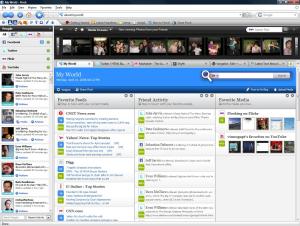Daylife is launching a new service today – the Enterprise API, which is a new component of the Daylife Platform.
Enterprise API will help a publisher/blogger establish an API for their content. They can choose to keep the API private or spread the love and make it public to developers.
How did we come to this idea?
We have been working at the Daylife API for almost two years now, and one of the most commonly used features by our partners and developers has been the filtering of content by a set of sources (what we call source filtering) to either:
a) Surface their own content or their partners’ content (Sky News topic pages);
b) Present a different perspective of news about a topic/subject by only showing content from, say, Travel sources (USA Today’s Cruise Log) or Conservative Politics sources or just blogs.
c) Give us an exclusive private feed of their media so we “Daylife-ize” that content and give you a full set of APIs to query for that content. Washington Post gave us an exclusive photo feed and now they use our Search API to build photo galleries on events like the 2008 Elections or the Olympics.
So we saw value in a publisher having an API for their content either for private or public use.
How does it work?
Say you are Jeff Jarvis@Buzzmachine; the API to get his articles about Journalism will look something like this:
http://buzzmachine.enterpriseapi.daylife.com/articles/Journalism?format=xml
The notable things about the Enterprise API:
- It returns you related articles, images, quotes and topics about any topic in the world.
- The response can be in XML, JSON, PHP-serialized or HTML format.
- Every method has its own set of parameters to tweak the data. The common parameters across all APIs:
- days_back – To get data from back in time. The default is 30 days.
- since_when – To browse into your archives.
- sort – You can sort your results by date or relevance to the topic. The default is relevance.
- limit – Number of results you need. Default is 10 and max is 100.
- offset – Paginate through more results by jumping to a result. Default is 0.
- The APIs cache the responses for 15 minutes for the same request.
- We host and monitor the APIs for you.
What do you need to do?
The only pre-requisite to use this product is that you need to have a RSS feed of your content. We will add the feed to our system and start indexing your data (if it’s not already there!).
This product is in a private alpha, so send us an email and we will get you setup.





